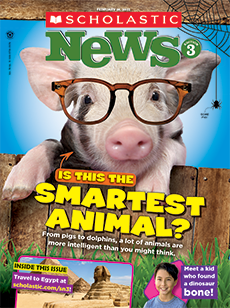1. What might be another good title for this article? Explain.
Sample response: Another good title for this article might be “Cicadas On the Move” because the main idea of the article is that two big groups of cicadas—Brood XIX and Brood XIII—came out of the ground this spring. The article states that in April, “more than a trillion creatures started crawling out of the ground.”
(RI.3.2 Main Idea)
2. Why are cicada Broods XIX and XIII unusual?
These two cicada broods are unusual because they do not emerge very often. The article explains that “most species of cicadas come out once a year.” It goes on to say, “Brood XIX emerges once every 13 years. Brood XIII comes out every 17 years.”
(RI.3.1 Text Evidence)
3. What are two facts you can learn from the article’s map?
Sample response: One fact you can learn from the article’s map is that Brood XIII has emerged in a smaller portion of the country than Brood XIX has. Another fact you can learn from the map is that Oklahoma is the westernmost state to be affected by Brood XIX.
(RI.3.7 Text Features)
